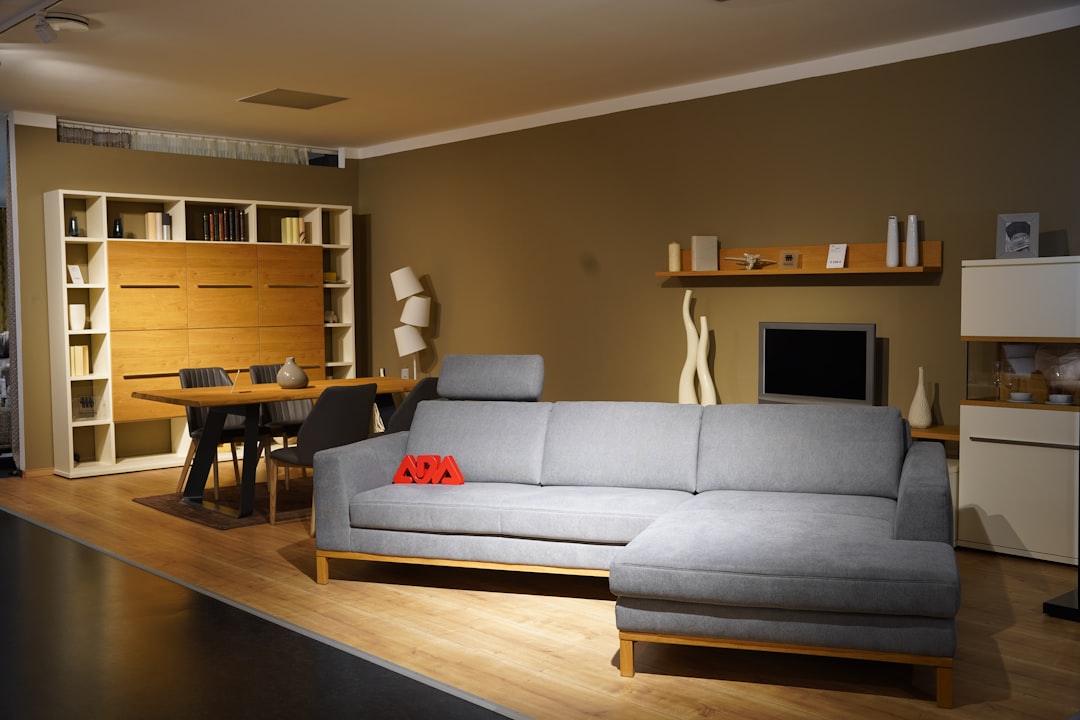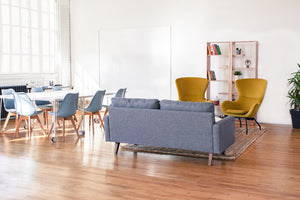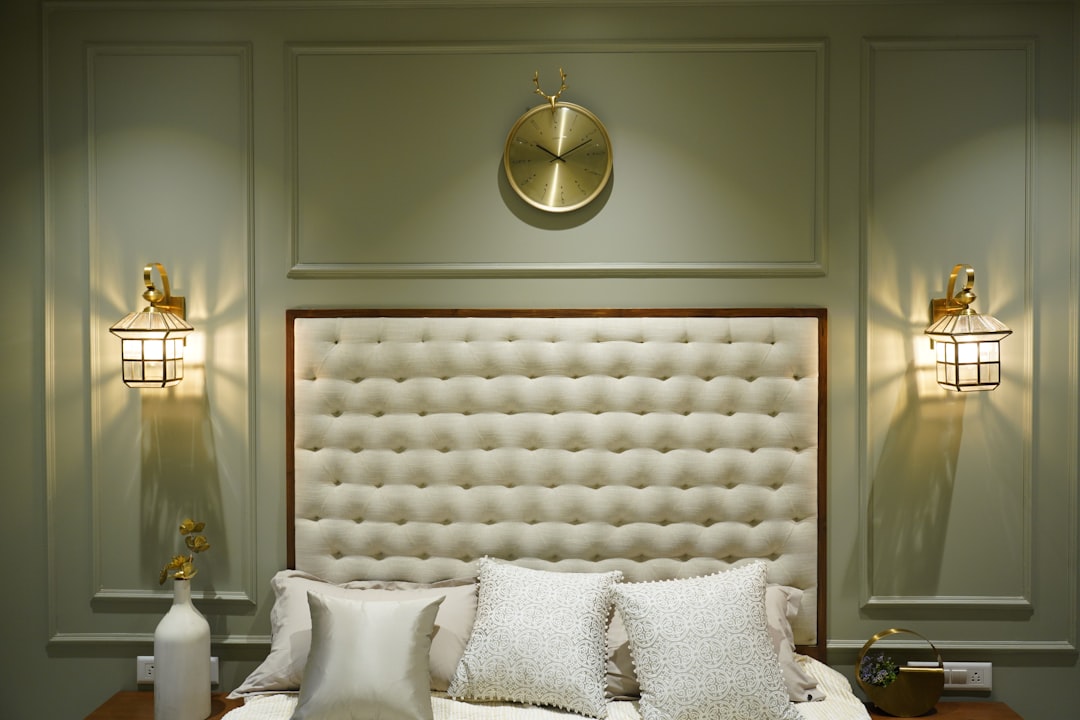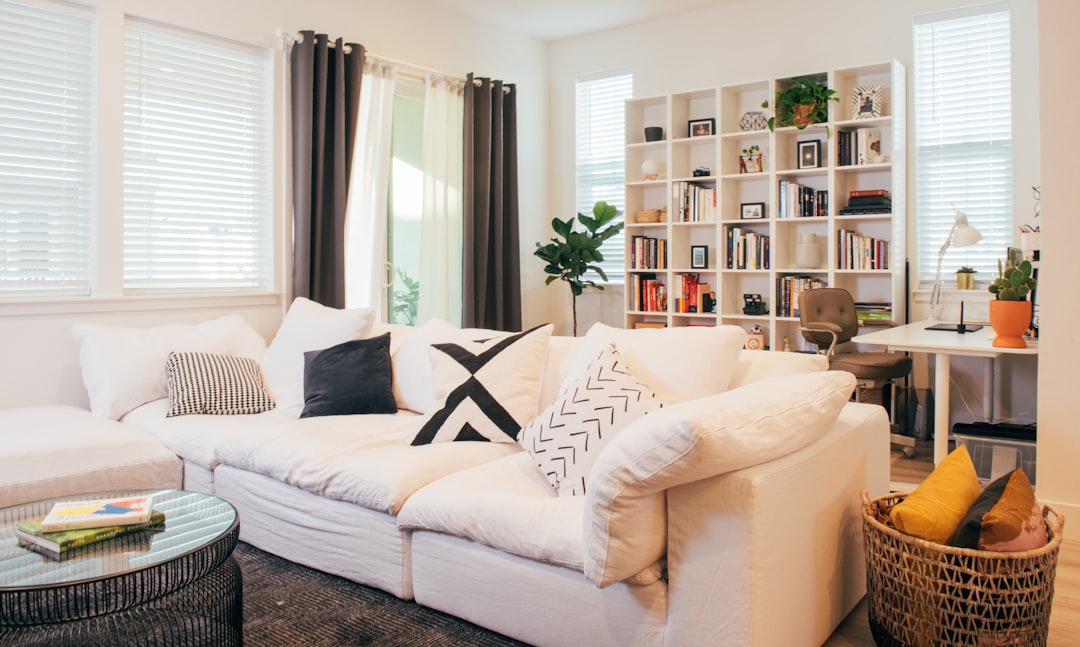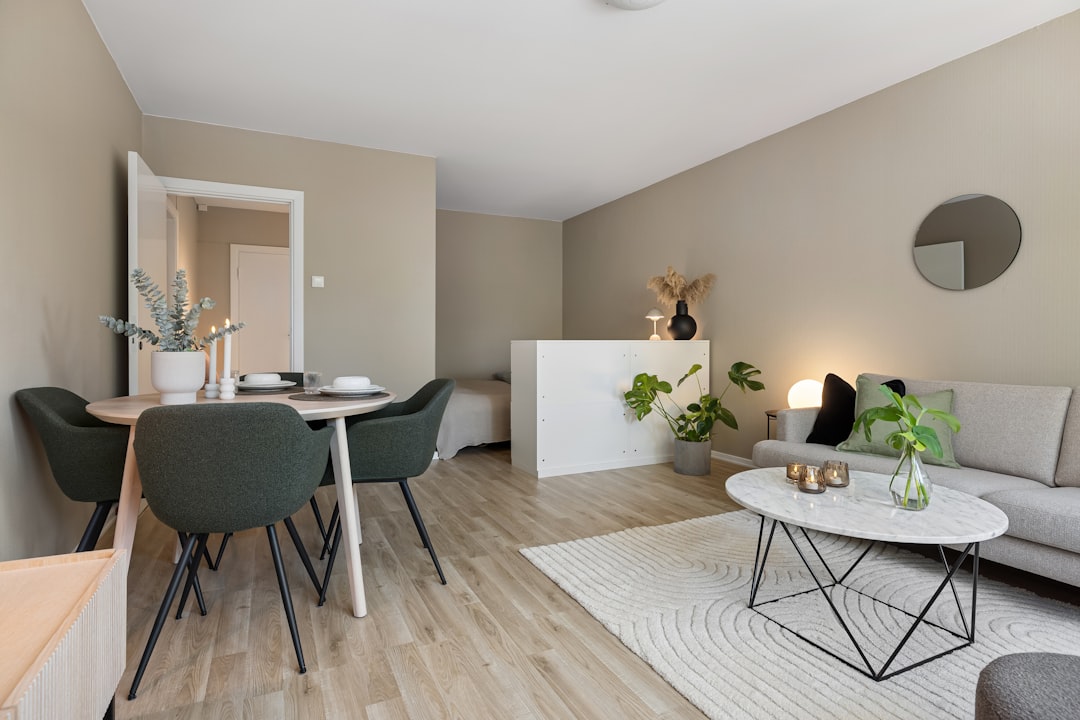Transform your living room into a spacious, luxurious retreat with smart design strategies that emphasize light, texture, and clever layout choices.
Small Living Room Design Ideas to Make Your Space Look Bigger and More Luxurious
Key Takeaways
- Use light neutral palettes to amplify natural light and create an airy ambiance.
- Employ mirrors and strategic furniture placement to visually expand space.
- Opt for slim, elevated furniture and floor-to-ceiling curtains to enhance openness and height.
- Layer textures and lighting for warmth, depth, and a sophisticated atmosphere.
- Incorporate bold rugs, statement art, and metallic accents to add personality and luxury.
- Maximize vertical storage with floating shelves and maintain clutter control for a polished look.
Table of Contents
- Why Small Living Room Design Matters
- Use Light Neutral Palettes to Create an Airy Ambiance
- Maximize Space with Mirrors and Smart Placement
- Elevate Ceilings with Floor-to-Ceiling Curtains
- Choose Slim, Elevated Furniture to Open Up the Floor
- Anchor the Space with Bold Rugs and Statement Art
- Layer Different Textures to Add Depth and Warmth
- Create Atmosphere with Layered Lighting
- Add Personality with Accent Walls and Peel-and-Stick Designs
- Utilize Wall Space with Floating and Corner Shelves
- Use Metallic Accents to Add a Sophisticated Glow
- Keep It Polished with Clutter Control and Regular Maintenance
- Small Living Room Design Hacks from Experts and Influencers
- Practical DIY Small Living Room Hacks That Save Space and Add Style
- Final Thoughts: Design a Small Living Room That Feels Spacious and Luxurious
1. Why Small Living Room Design Matters
A small living room doesn’t have to feel cramped or uninspired. With thoughtful planning and a few clever tricks, you can open up your space visually, make it more welcoming, and even give it a luxurious edge. Strategic furniture placement, layered lighting, and well-curated textures are key to elevating your room. Whether you’re aiming to impress your guests or carve out a cozy haven for yourself, these tried-and-true design ideas offer stylish solutions on any budget.
2. Use Light Neutral Palettes to Create an Airy Ambiance
One of the simplest but most impactful changes you can make is choosing a light, neutral color scheme. Soft whites, pale grays, creams, and muted pastels amplify natural light and make your space appear more expansive and cohesive.
Why Light Colors Work:
- They reflect both daylight and artificial lighting, enhancing brightness.
- Neutral tones serve as a calming, unobtrusive backdrop for layered textures.
- Lighter walls reduce visual density, helping the room feel more open.
Add personality by incorporating subtle accents through pillows, throws, or small décor items in warm earthy tones or soothing pastels.
3. Maximize Space with Mirrors and Smart Placement
Mirrors are a go-to design element for visually enlarging a space. When strategically positioned, they bounce light around the room and create the illusion of depth and openness.
Tips for Mirror Placement:
- Hang a large mirror opposite a window to reflect natural light.
- Use floor-to-ceiling or leaning mirrors for a relaxed yet elegant vibe.
- Incorporate mirrored furniture—like a coffee table or sideboard—for added brightness without visual heaviness.
In addition to reflecting light, mirrors act as focal points that draw the eye across and upward, subtly expanding your room.
4. Elevate Ceilings with Floor-to-Ceiling Curtains
Curtain placement can dramatically affect your room’s perceived height. Installing curtains at ceiling level and allowing them to drape to the floor pulls the eye upward and gives the impression of taller walls.
How to Style Curtains:
- Choose light fabrics in neutral or sheer materials to maintain airflow and brightness.
- Mount curtain rods just below the ceiling line for maximum vertical lift.
- Even in small spaces, floor-length curtains add a cohesive, elegant finish.
This strategy works especially well in spaces with lower ceilings, helping to balance other height-enhancing elements like slim furniture and tall mirrors.
5. Choose Slim, Elevated Furniture to Open Up the Floor
Bulky furniture with solid bases tends to dominate small rooms. Instead, opt for pieces on legs that expose more floor area, making the room feel lighter and less confined.
Look for These Furniture Features:
- Slim-profile sofas and chairs with tapered or track legs.
- Light, streamlined coffee tables and side pieces.
- Versatile storage ottomans with hidden compartments.
- Curved sectionals or nesting tables to soften tight corners.
When more flooring is visible, the room naturally feels more expansive—a subtle trick that makes a big difference.
6. Anchor the Space with Bold Rugs and Statement Art
It might seem counterintuitive, but going big with a few standout pieces actually makes a small room feel more stylish and intentional.
Why Oversized Décor Works:
- Large-scale artwork becomes an instant focal point, drawing attention away from the room’s size.
- Full-size rugs help define zones and unify furnishings, adding structure.
- Bold pieces lend a curated, high-end look without overwhelming your layout.
Experiment with geometric artwork, textured panels, or mural-style prints to add visual interest and dimension.
7. Layer Different Textures to Add Depth and Warmth
Small spaces benefit immensely from tactile variety. A thoughtful mix of materials creates warmth, visual contrast, and a touch of luxury—all without adding bulk.
Texture Ideas to Try:
- Velvet cushions or throws for plush softness.
- Linen or silk curtains to introduce light movement and sheen.
- Cozy knits or faux fur for a tactile, inviting vibe.
- Natural materials like stone, wood, or metal for visual balance.
Layering textures is a powerful way to inject character and comfort into your design while keeping the space stylish and refined.
8. Create Atmosphere with Layered Lighting
A well-lit room feels larger, more functional, and more inviting. Rather than relying on a single overhead fixture, embrace a multi-layer lighting approach to add depth and control.
Lighting Tips:
- Use ceiling fixtures for general lighting, and add table or floor lamps for tasks like reading.
- Incorporate accent lighting—such as wall sconces or under-shelf LEDs—to highlight décor or architectural features.
- Choose dimmable bulbs in warm tones to adjust the mood and reduce harsh shadows.
Layered lighting ensures every corner feels deliberate and welcoming while visually opening up the space.
9. Add Personality with Accent Walls and Peel-and-Stick Designs
An accent wall can add depth and interest to your space without requiring a major renovation. It's a great way to experiment with color or texture in moderation.
Accent Wall Options:
- Textured or faux grasscloth wallpaper for subtle dimension.
- Bold patterns and modern shiplap for visual rhythm.
- Nature-inspired murals or abstract art that expands the perceived space.
- Peel-and-stick designs that are renter-friendly and easy to update.
Used thoughtfully, an accent wall draws the eye outward and balances the room’s proportions with style.
10. Utilize Wall Space with Floating and Corner Shelves
Maximizing vertical space is key in compact rooms. Floating shelves and corner units offer storage and display solutions without occupying valuable floor space.
Smart Storage Ideas:
- Install shelves above doors or windows for less-used items.
- Use corner shelving to take advantage of underutilized nooks.
- Go for slim, open shelving to maintain an airy look.
- Style shelves with intention—mixing décor with essentials to keep surfaces clean and curated.
This approach keeps clutter off the floor and draws attention to height rather than width, enhancing the room's proportions.
11. Use Metallic Accents to Add a Sophisticated Glow
When used sparingly, metallic elements lend elegance and depth to a small living room. They reflect light, add visual contrast, and act as subtle highlights throughout your design.
Where to Add Metallic Touches:
- Brass or matte gold lamp bases and cabinet pulls.
- Framed mirrors and artwork with metallic finishes.
- Decorative trays, candle holders, or accent tables.
Incorporating a few gleaming details lifts the space and gives it a refined, designer feel—without adding visual weight.
12. Keep It Polished with Clutter Control and Regular Maintenance
No design choice can compensate for visible mess. Keeping your space clean, organized, and cared for ensures your efforts pay off in the long run.
Easy Maintenance Tips:
- Use closed storage—like ottomans, baskets, or drawer organizers—to hide clutter.
- Wipe down metallic and glass finishes to keep them sparkling.
- Dust and vacuum textured fabrics like velvet to maintain their texture and vibrancy.
- Polish wood surfaces monthly to preserve their finish and prevent wear.
A few routine maintenance habits help preserve the look and feel of your space and extend the life of your furnishings.
13. Small Living Room Design Hacks from Experts and Influencers
Interior design influencers like Hans Lorei have popularized smart approaches to small space styling. His “think BIG” philosophy proves especially effective in compact rooms.
His Go-To Strategies Include:
- Incorporating oversized wall art and rugs to define and elevate the room.
- Using pastel and neutral shades to brighten and soften small spaces.
- Selecting leggy, lightweight furniture for better flow.
- Mixing vertical and horizontal lines to influence visual perception and balance dimensions.
When combined with professional principles, these ideas offer an accessible roadmap for making your small living room chic and functional.
14. Practical DIY Small Living Room Hacks That Save Space and Add Style
Revamping your living room doesn’t have to mean a major renovation. The right DIY tweaks can significantly improve how your space looks and feels.
Space-Saving DIY Tips:
- Wall-mount your TV to free up floor or console space.
- Use pegboards or wall hooks to organize daily essentials.
- Add custom shelving above windows for stashing books or décor.
- Arrange furniture to promote conversation and open pathways.
- Choose mirrored or reflective furniture to bounce light and reduce visual clutter.
These ideas are easy to implement and bring immediate improvements in aesthetics and usability.
15. Final Thoughts: Design a Small Living Room That Feels Spacious and Luxurious
Your living room may be small in size, but with the right design approach, it can still feel spacious, elegant, and supremely functional. The secret lies in smart choices: think light colors, elevated furniture, layered lighting, and reflective surfaces. Add texture, use vertical space wisely, and don't shy away from bold accents that showcase your personality. Clutter control and regular upkeep will keep your room feeling fresh and elevated.
With these strategies, there’s no need to compromise on comfort or style. Even the most compact living room can become a beautiful, bright, and luxurious space that works for daily life and effortless entertaining.
FAQ
Q: What paint colors make a small living room look bigger?
A: Light neutral colors such as soft whites, pale grays, creams, and muted pastels work best because they reflect light and create an airy, open feel.
Q: How can I use furniture to maximize space in a small living room?
A: Choose slim, elevated furniture that exposes more floor area, and incorporate pieces with built-in storage like ottomans or nesting tables to reduce clutter.
Q: What lighting techniques help a small living room appear larger?
A: Layered lighting including ceiling fixtures, table or floor lamps, and accent lights creates depth and control, preventing shadows and enhancing the sense of space.
Q: Are bold patterns and oversized art suitable for small spaces?
A: Yes, large-scale rugs and statement art establish focal points and define zones, adding style and dimension without overwhelming the room.
Q: How can I maintain a polished look in a small living room?
A: Regular clutter control using closed storage, frequent cleaning of surfaces, and upkeep of textiles will keep your room bright and inviting.
FOR MORE PRODUCTS AND DETAILS, VISIT OUR WEBSITE.

